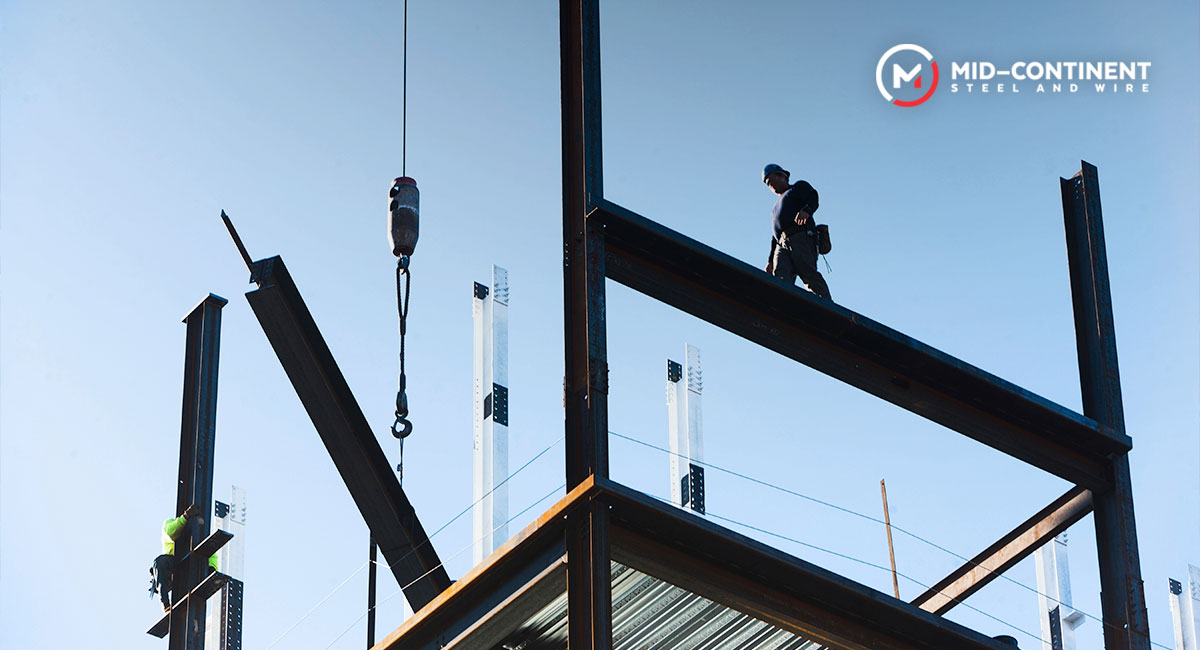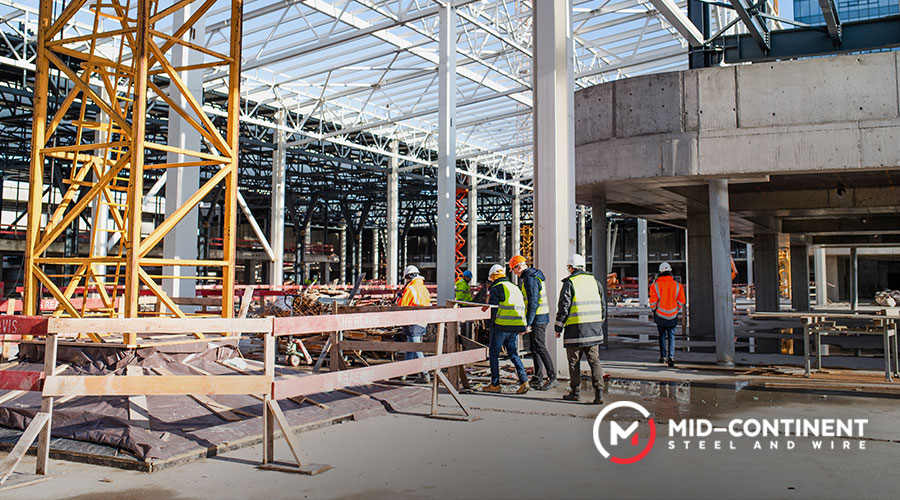
Beam loads refer to the various forces acting on a beam that it needs to withstand. These forces generate internal stresses, mainly appearing as shear forces and bending moments. The main role of beams is to support these loads and distribute them sideways to structural supports such as columns, walls, or foundations.

Types of loads on beams
Based on how the load is applied
Uniformly distributed load (UDL)
A Uniformly Distributed Load (UDL) is a force spread evenly along a beam’s length, measured in force per unit length (e.g., kN/m). Common examples include the beam’s own weight, partition walls, or floor slabs. Under a UDL, shear force varies linearly, and the bending moment forms a smooth parabola, peaking at the beam’s center.
Uniformly varying load (UVL) / triangular load
A Uniformly Varying Load (UVL) changes intensity linearly along a beam, forming a triangular shape from zero to a maximum force per unit length. Common examples include water pressure on dams or tanks and earth pressure on retaining walls. UVL analysis produces parabolic shear and cubic bending moment diagrams.
Point load
A Point Load is a force applied at a single spot on a beam, idealized when the load area is very small. Examples include columns on girders or heavy equipment on beams. Point loads cause sudden jumps in shear force and sharp changes in the bending moment diagrams.
Moment load
A Moment Load applies a twisting force at a point on a beam, measured in force times distance (e.g., kNm). It occurs from external forces or connections, like a cantilever holding a sign or rigid frame joints. It causes a sudden jump in the bending moment diagram but doesn’t affect shear force.
Trapezoidal load
A Trapezoidal Load combines a uniform load and a varying load, with intensity changing linearly but not starting at zero. It’s common in earth pressure with surcharge or slab load distribution. For calculations, it’s often split into a rectangular UDL and a triangular UVL.
Based on source
Wind load
Wind Load is the force wind applies to a structure, causing pressure, suction, and uplift on different surfaces. Its size depends on location, building shape, height, and surroundings. For tall buildings and large structures, wind load is a key factor in designing beams and columns for lateral stability.
Live load
Live loads are temporary and changing forces like occupants, furniture, and vehicles. They vary over time and can cause maximum shear and bending in beams, often more than uniform loads.
Dead load
Dead Loads are permanent, constant forces from the structure’s own weight and fixed components like roofing, flooring, plumbing, and electrical systems.
Impact load
Impact loads are quick, dynamic forces that exceed static loads and cause the structure to shake. Examples include objects dropping, vehicles crashing, or heavy equipment in operation. To consider these effects, engineers apply an impact multiplier to the static load.
Snow load
Snow loads are live environmental forces caused by snow buildup on roofs. Their size depends on location, climate, altitude, and roof shape. Snow drifting can create uneven loads, like triangular or trapezoidal patterns, especially on overhangs or stepped roofs, needing careful design attention.
Thermal load
Thermal loads occur when temperature changes cause a structure to expand or contract. If movement is restricted by supports, internal stresses build up. For example, a sun-heated bridge beam tries to expand, but fixed ends cause compressive stress and bending forces.
Based on variation over time
Static loads
Static loads are slowly applied forces that stay constant over time and don’t cause noticeable vibrations. Dead loads are the main type, while live loads are often treated as static in building design to account for worst-case stress scenarios.
Dynamic loads
Dynamic loads change over time and can cause vibration or movement in a structure. They include forces like wind, earthquakes, impacts, and machinery vibrations. Unlike static loads, they require complex analysis that considers inertia and possible resonance effects.

We have the best products for your project
Understanding the diverse types of loads on beams is an essential first step in structural design. Mid-Continent Steel and Wire provides excellence in every beam, with the strength required to safely transfer loads to columns and foundations. Visit our catalog of products.

